Posted by Anna on 27th Dec 2022
Gordon Tartan And Bloody Stories Of The Clan
The Clan Gordon Tartan saga spans the entirety of Scotland and beyond, featuring opposing factions and brutal feuds with nearby clans. The fiery House of Gordon was fearless when standing up for what they thought was right.
The meaning of the name
The name Gordon is not Gaelic; rather, it is thought to have come from Normandy. The Macedonian city of Gordonia is often cited as the source of the name Gordon. The clan is frequently referred to as the House of Gordon because of its foreign ancestry.
The Origin of the Gordon Tartan Clan
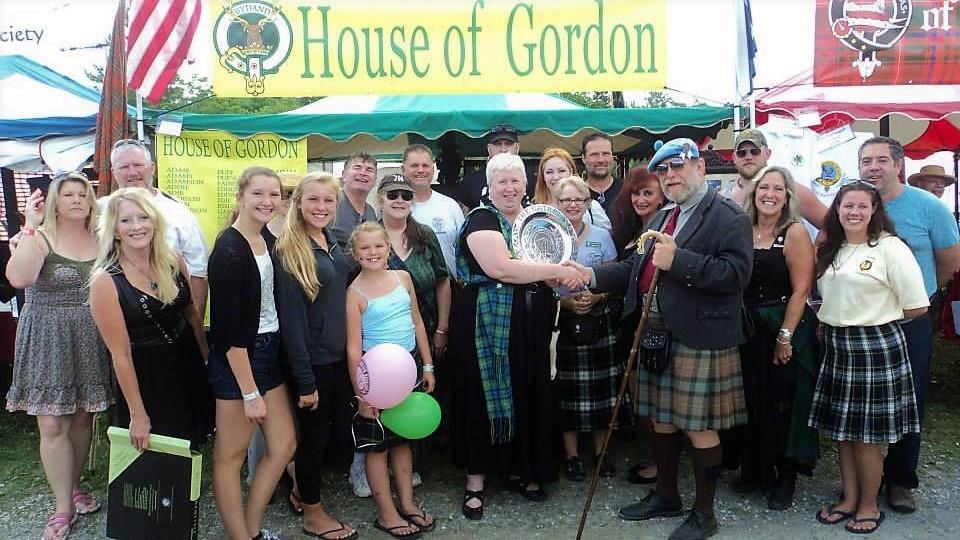
Gordon Clan Tartan
King David I invited the first Gordons to Scotland, and by the beginning of the 12th century, they had settled in the Scottish Borders, close to Kelso, under the watchful eye of the local Earl of Dunbar. In the centuries that followed, the clan would prosper and establish itself as a dominant force in the Scottish Highlands' Aberdeenshire region, further north.
The clan initially supported William Wallace during the Wars of Scottish Independence but then shifted allegiances to support Robert the Bruce and his campaign to liberate Scotland from English tyranny. The clan received territory at Strathbogie in Aberdeenshire as a result of Sir Adam of Gordon's commitment to Bruce's cause, including Huntly Castle, which would later serve as the clan's ancestral home.
The Earl of Huntly, who became the Marquess of Huntly in April 1599, is the clan's leader. Although it is a common belief that all Gordons are descended from Sir Adam Gordon, others contend that not all 150 households bearing the Gordon name were actually related to the first Earl of Huntly.
Gordon Tartan
With its black, blue, and green color pattern, Clan Gordon tartan is comparable to a Black Watch tartan but with the addition of a yellow stripe. The Red Gordon tartan also referred to as "Huntly," is a charming variant of the original Gordon tartan. With autumnal browns and greys, the Gordon Worn tartan is a more subdued version of the design, while the Gordon Red Weathered tartan is a variation of the weathered appearance.
The Gordon Dress Modern tartan, which incorporates white like the Gordon Dress Ancient tartan, is a brighter, more striking variation of the classic tartan. Here are the types of Gordon Tartan:

Scottish Gordon Ancient Clan Tartan Round Rug. Buy products here.
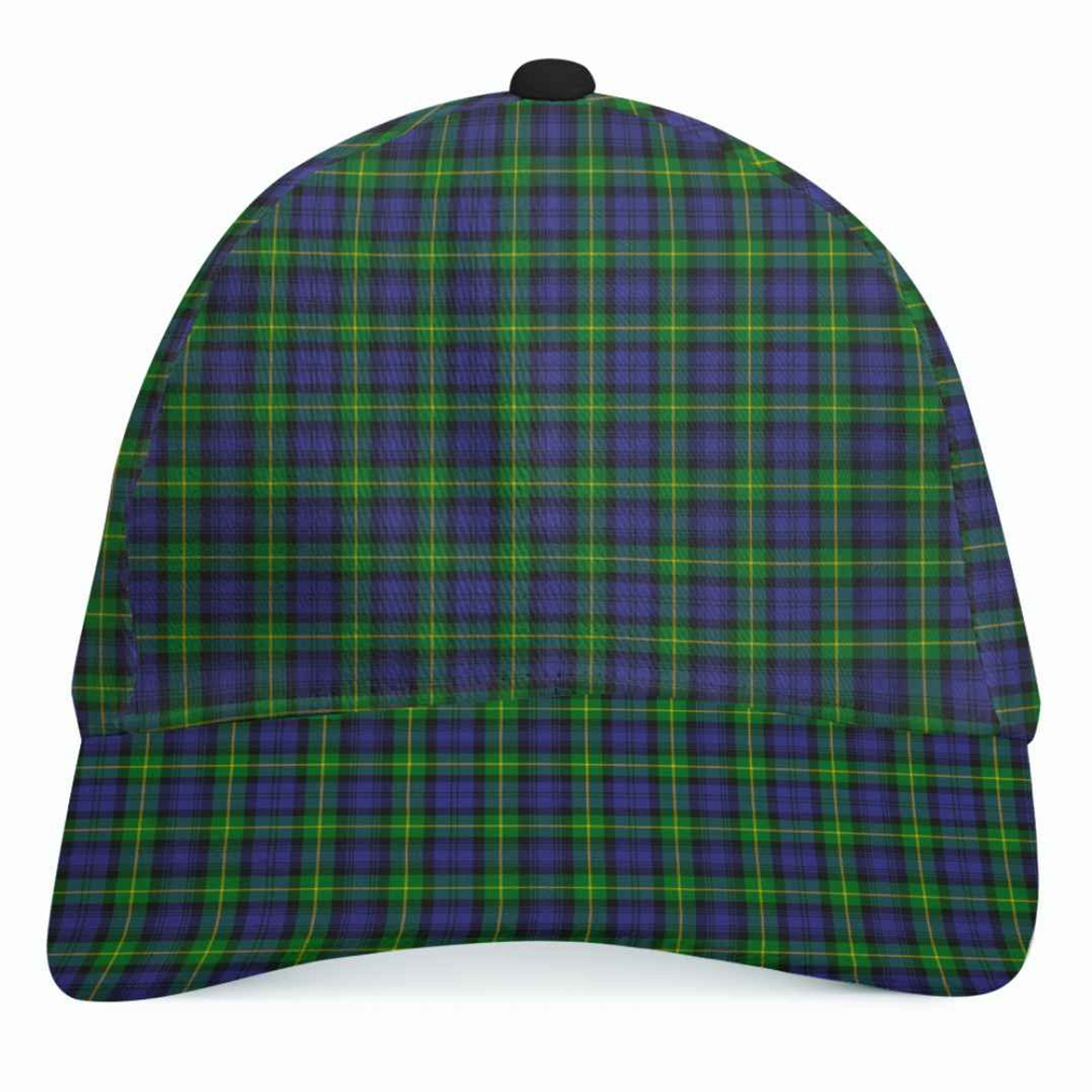
Scottish Gordon Modern Clan Tartan Cap. Buy products here.

Scottish Gordon Weathered Clan Tartan Messenger Bag. Buy products here.

Scottish Gordon Dress Modern Clan Tartan Sneakers. Buy products here.
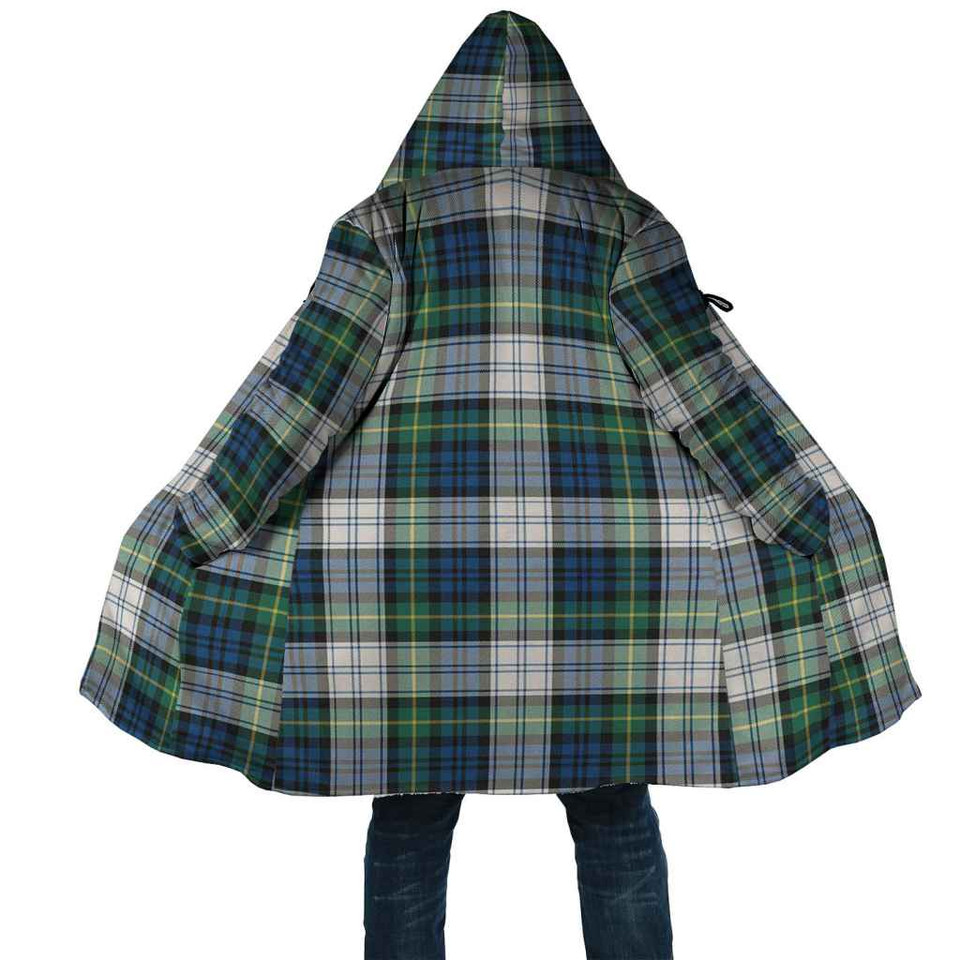
Scottish Gordon Dress Ancient Clan Tartan Cloak. Buy products here.
Gordon Clan Crest
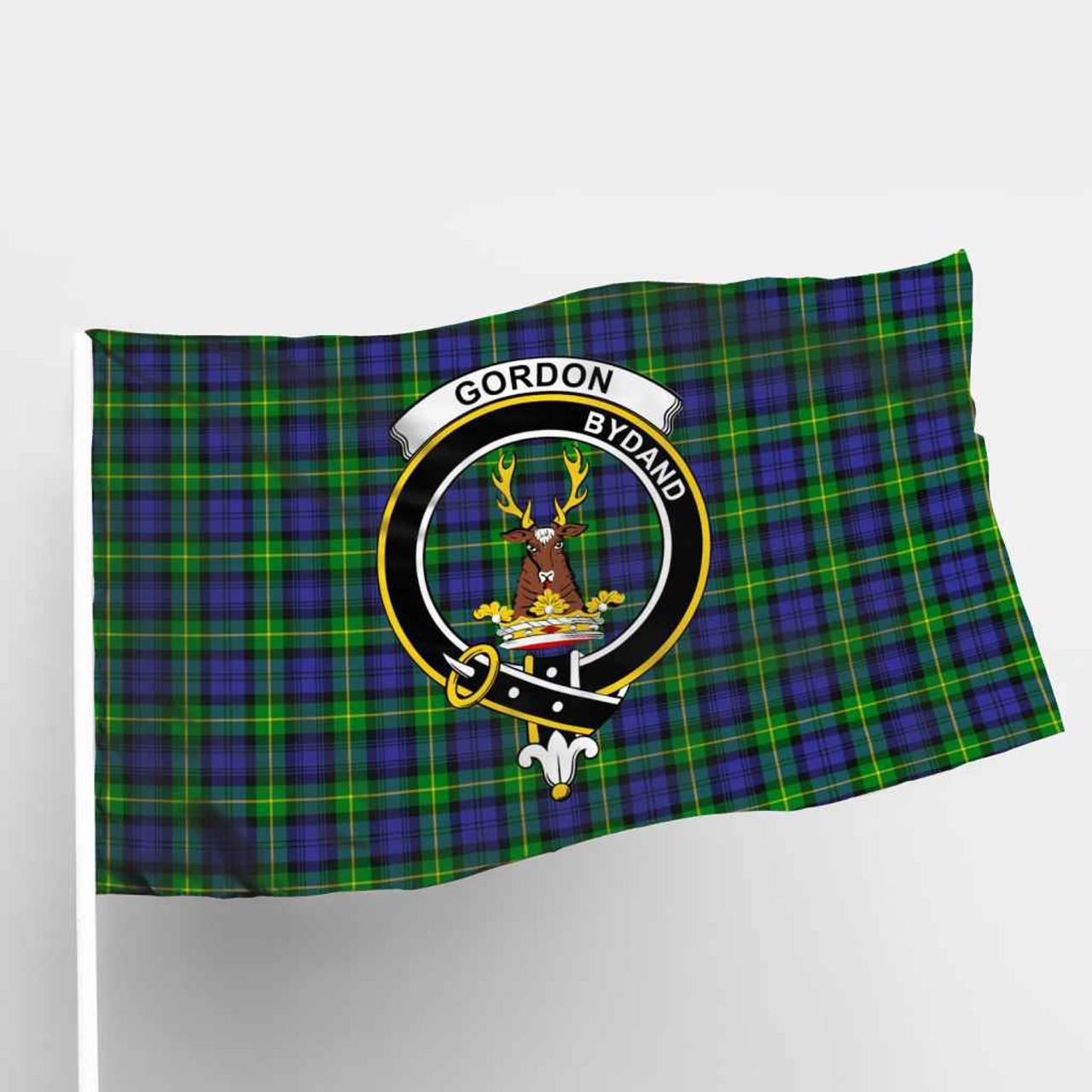
Gordon Clan Crest. Buy products here.
Clan members used the crest, which served as a token of fealty to their clan leader.
The majestic stag head on the Clan Gordon family crest contains two mottos: animo non astutia, which means "through courage, not cunning," and bydand, which might either "remain and fight" or "resilience."
Clan Gordon Conflicts
Clan Gordon participated actively in the Wars of Scottish Independence throughout the late 13th and early 14th centuries, fighting for Robert the Bruce. During the severe warfare, the clan suffered losses, including the deaths of Sir Adam Gordon, the clan's commander, at the Battle of Halidon Hill in 1333 and Sir John Gordon, the chief, at the Battle of Otterburn in 1388. Elizabeth Gordon, the chief's only child, wed Clan Seton chief Alexander Seton, but the Clan Gordon name persisted when their son changed back to Gordon in 1457.
Clan Gordon engaged in fierce clan disputes, particularly with Clan Lindsay and Clan Douglas, in addition to fighting the English.
Patrick Gordon of Methlic, the cousin of the Earl of Huntly, battled Clan Lindsay and perished at the Battle of Arbroath in 1445. But at the Battle of Brechin in 1452, Clan Gordon and Clan Ogilvy joined forces to destroy Clan Lindsay.
Clan Douglas fought the Gordons for dominance and destroyed the clan's estates, setting Huntly Castle on fire among other things. Clan Gordon eventually defeated Clan Douglas in 1454, and clan chief Alexander Gordon earned the nickname "Cock o' the North," which would be used to refer to subsequent chiefs of Clan Gordon for generations to come.
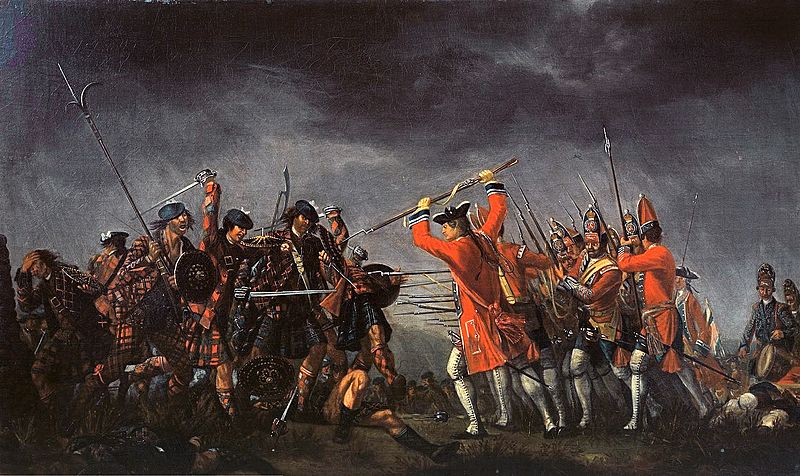
Battle of Culloden
Due to the assassination of Seton of Meldrum, who had a close relationship to the Earl of Huntly, and the Protestant Reformation, Clan Gordon and Clan Forbes engaged in a protracted and bloody war against one another during the 16th century. Until the Parliament intervened and ordered the tribes to lay down their arms, battles and massacres continued.
George Gordon, 4th Earl of Huntly, ran afoul of Mary Queen of Scots when he unintentionally denied her entry to Inverness Castle. The Earl was defeated in the next 2,000-man combat and passed away from apoplexy shortly afterward. In an odd turn of events, George Gordon's body, which had been gutted, salted, and pickled, was brought before the Scottish Parliament and put on trial for high treason six months after his death.
Clan Gordon was split in half during the Civil War, with members of the clan fighting on opposing sides at the Battle of Aberdeen. Lord Lewis Gordon headed one side, which fought for the Covenanters, and Sir Nathaniel Gordon led the other, which fought for the Royalists.
After the Jacobite uprisings of 1715 and 1745, when Clan Gordon members fought on opposing sides at the Battles of Inverurie, Falkirk, and Culloden, the clan's divided allegiance persisted into the 18th century.
Castles of Gordon Tartan Family
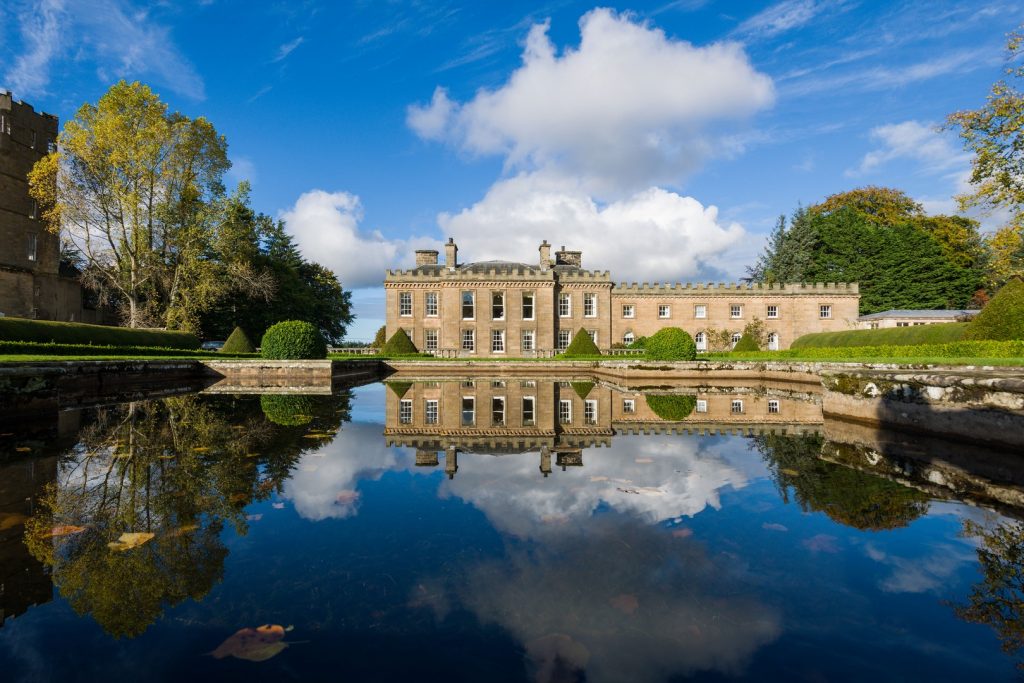
Gordon Castle
With 149 castle sites spread out across the northeast of Scotland, the clan has ties to both Aberdeenshire and the Scottish Borders.
- Although there is currently no sign of the first fortification, the original Gordon Castle is supposed to have stood in the Scottish Borders settlement of Gordon. East of Elgin in Moray, the 15th-century Gordon Castle is now a well-liked tourist attraction with modern interior decor and a lovely walled garden.
- Another Clan Gordon residence, the Baronial Fyvie Castle, has hosted a number of notable visitors over the years, including Charles I and Robert the Bruce.
- After being sold to the 3rd Earl of Huntly in the fifteenth century, the magnificent estate is currently most known for serving as a private royal palace.
- The ruins of Huntly Castle, which are located north of Aberdeen, are still accessible today. The abandoned Kenmure Castle of Clan Gordon is located in Galloway and was a hotel up until the 1950s.
We have all these items for sale. If you are interested in Gordon Tartan, please visit our online store here.
In particular, we have a 15% discount code exclusively for the readers reading this article! Please insert code: VBLOG15 for your cart. Happy shopping!

